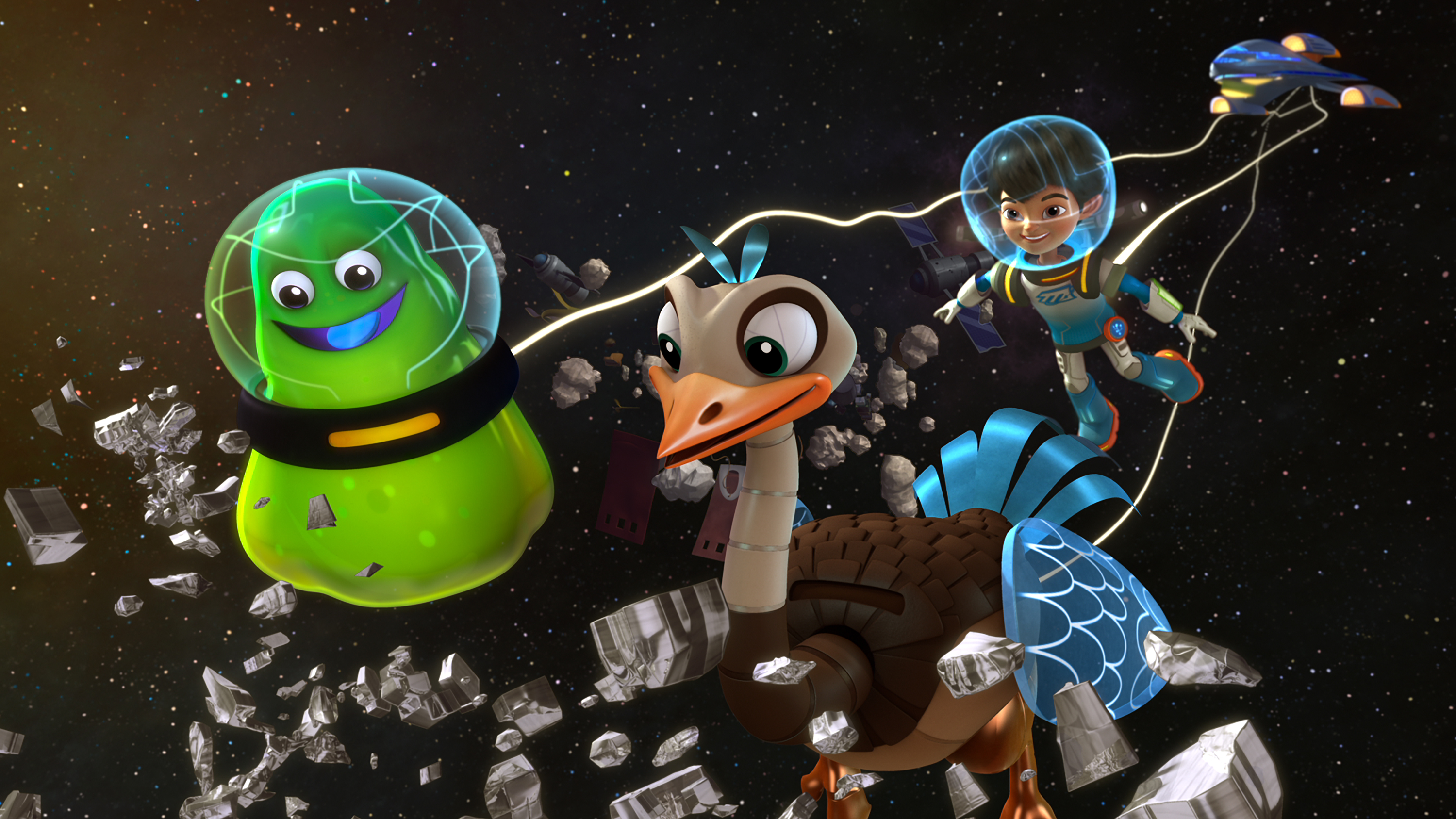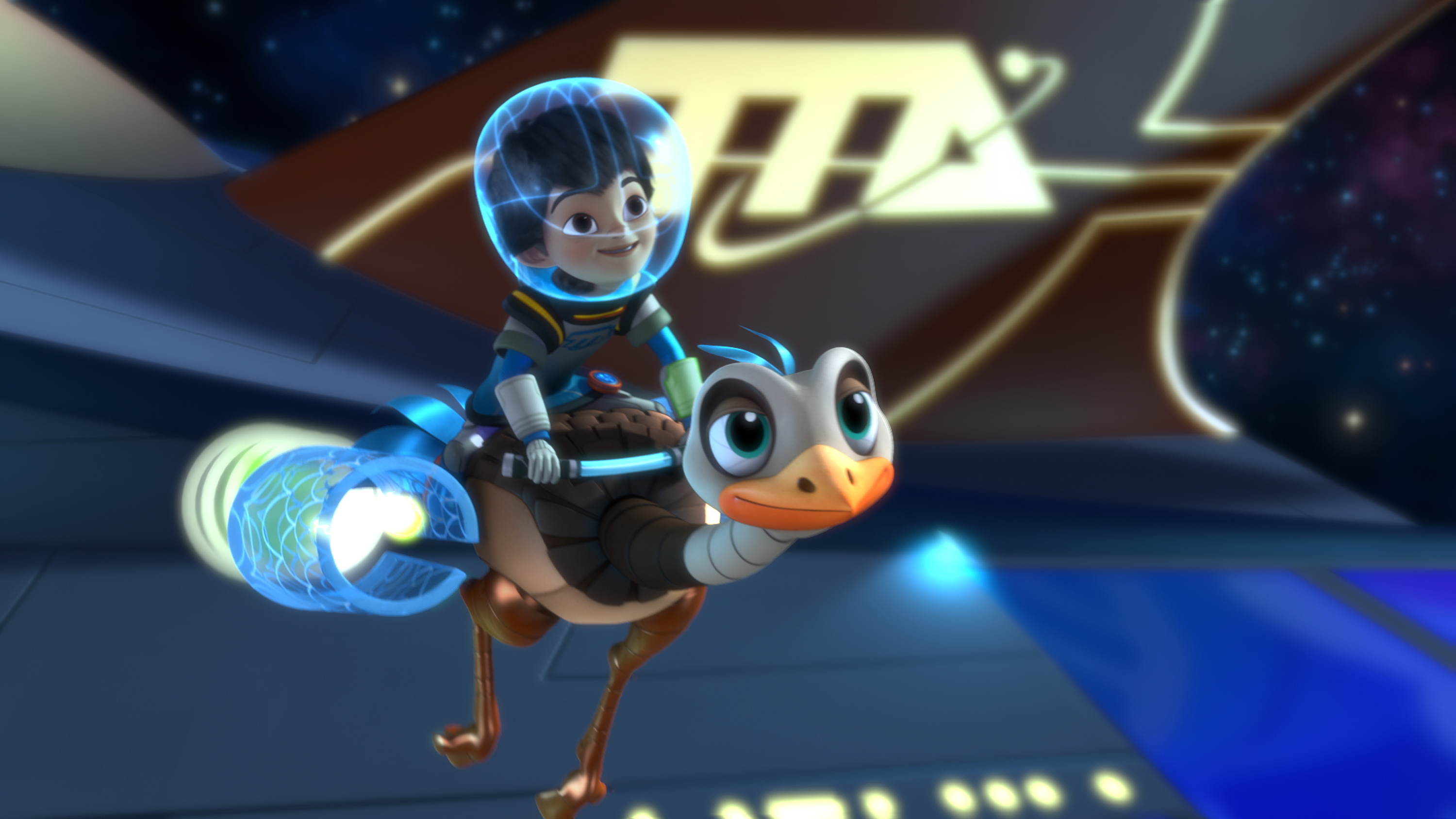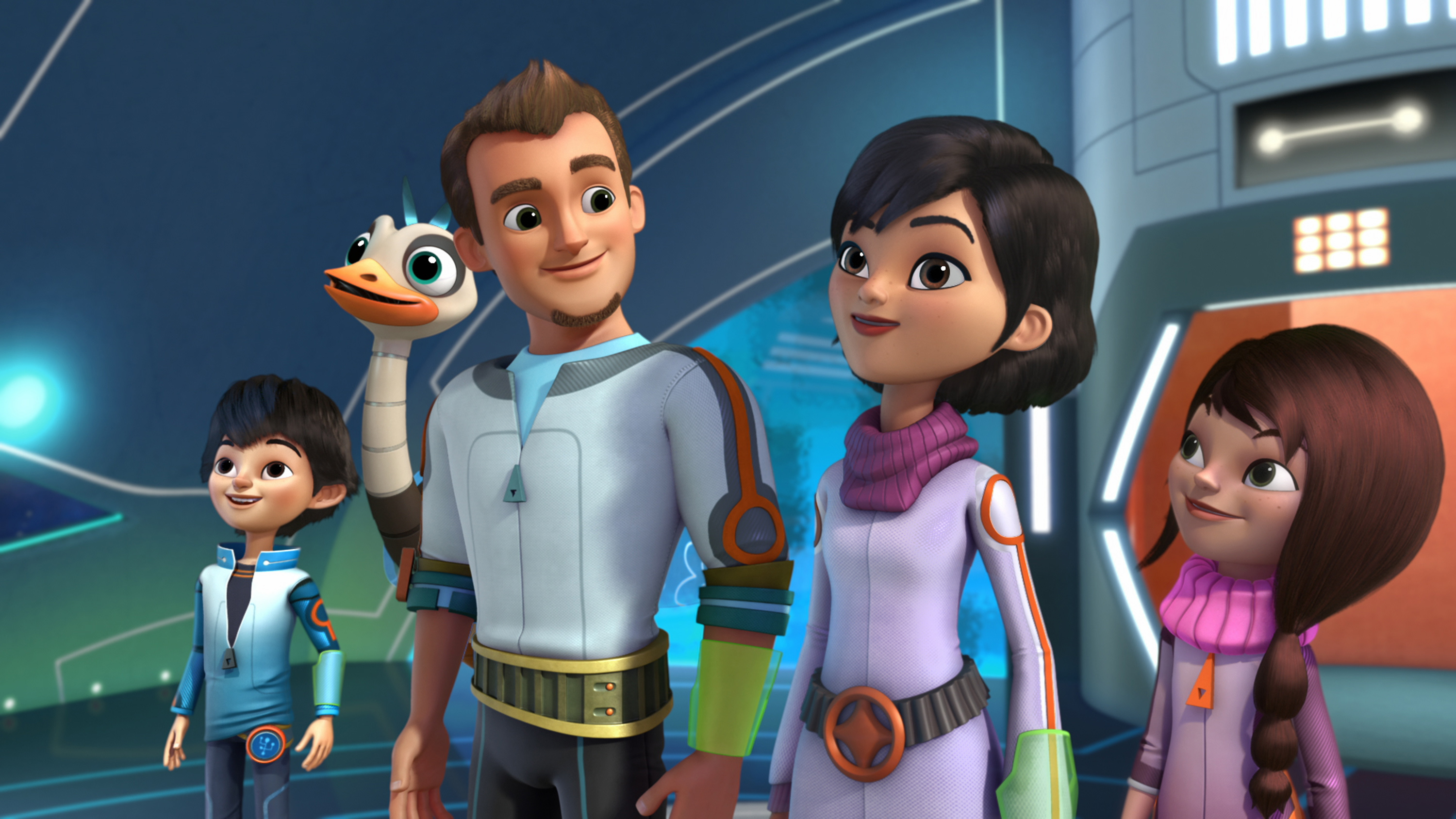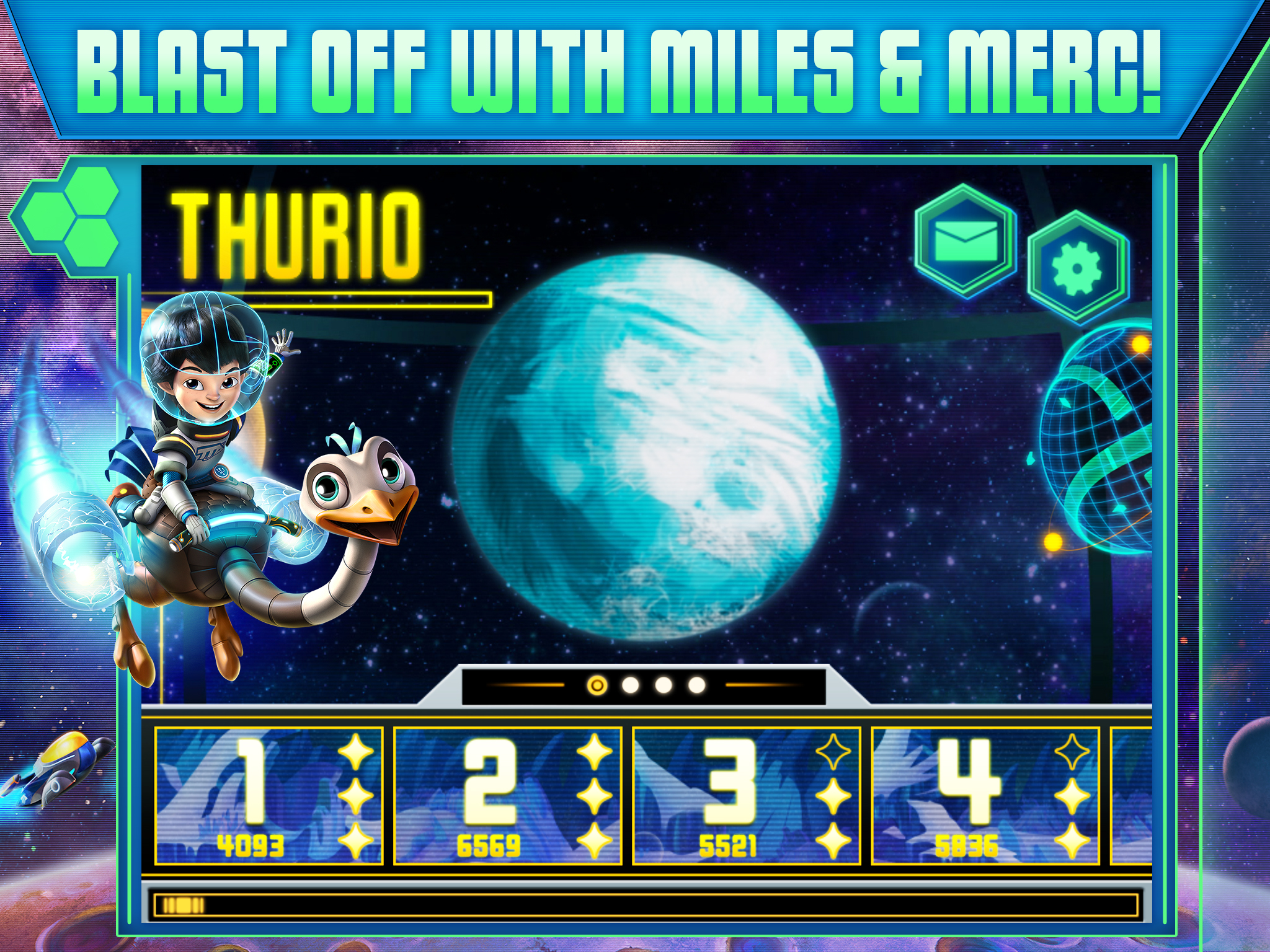Disney's 'Miles from Tomorrowland': A Space Romp for Kids with Real Science

A new animated TV show from Disney Junior is letting the imaginations of young space fans of tomorrow run wild through the universe, and it's even trying to teach them a little space science along the way.
The show "Miles from Tomorrowland" follows the adventures of Miles, his family and his pet robotic ostrich as they tool around the cosmos in their interstellar starship. The Callisto family roams the universe going on missions and helping people in trouble. The show also comes with a built-in element of education thanks in part to two consultants charged with helping craft a science-based world for Miles and his family.

"As a young, impressionable person, stories that have good values to them — never give up, that science and technology can help us and make life better … that you can be part of this whole thing — those are really important stories," John Spencer, one of the "Miles" consultants, said. [10 Space Movies to Watch in 2015]
Spencer, the founder of the Space Tourism Society, and NASA Jet Propulsion Laboratory scientist Randii Wessen helped the "Miles from Tomorrowland" team craft the show. Spencer spoke with the team to help them build a positive vision of the future of space travel, and Wessen provides advice about how best to represent actual science in the animated world of the show.
The first episode of the series follows the Callisto family to Jupiter's volcanic moon Io, where Miles and his family need to save an ice cream salesman's shuttle from falling to the planet's hot surface. The creators of the show embed these science facts into the fabric of the show.
"It's something that I like to refer to as 'learning inadvertently, where you just kind of put these things in there just as a backdrop," Wessen — who consulted on each episode of the first season of "Miles" — told Space.com.

Wessen doesn't try to make the entire world scientifically sound, but he does try to add as much real science into the show without getting in the way of the story. For example, while the family might not float around in zero-gravity on their starship, other characters do float if the vessel's gravity is turned off. Although that isn't technologically possible now, Wessen doesn't necessarily think it's absolutely impossible that humans could invent that kind of tech someday.
Get the Space.com Newsletter
Breaking space news, the latest updates on rocket launches, skywatching events and more!
Spencer spent a good amount of time speaking with the "Miles from Tomorrowland" creators about what the future of spaceflight and humanity could look like. The show could also help kids learn more about tolerance and family values, while instilling a positive view of the future, according to Spencer.
"The fact that they [the characters on the show] are dealing with different aliens … that kind of stuff builds an awareness to be tolerant to people, that diversity, different people, different creatures are fine," Spencer told Space.com. "What can you learn from them? These are important building blocks for creating a healthy view of the future. To me, that's the most important part of a show like 'Miles,' is a healthy view of the future."

"Miles" is also jumping off the small screen and into the real world through a new line of toys set for release in August. Disney has also released a "Miles from Tomorrowland" app that allows kids of all ages to control Miles on one of his adventures through the universe. You can download the app on iTunes now: https://itunes.apple.com/app/miles-from-tomorrowland-missions/id949773510
You can check out "Miles from Tomorrowland" on the Disney Channel. Check local listings.
Follow Miriam Kramer @mirikramer. Follow us @Spacedotcom, Facebookand Google+. Original article on Space.com.
Join our Space Forums to keep talking space on the latest missions, night sky and more! And if you have a news tip, correction or comment, let us know at: community@space.com.

Miriam Kramer joined Space.com as a Staff Writer in December 2012. Since then, she has floated in weightlessness on a zero-gravity flight, felt the pull of 4-Gs in a trainer aircraft and watched rockets soar into space from Florida and Virginia. She also served as Space.com's lead space entertainment reporter, and enjoys all aspects of space news, astronomy and commercial spaceflight. Miriam has also presented space stories during live interviews with Fox News and other TV and radio outlets. She originally hails from Knoxville, Tennessee where she and her family would take trips to dark spots on the outskirts of town to watch meteor showers every year. She loves to travel and one day hopes to see the northern lights in person. Miriam is currently a space reporter with Axios, writing the Axios Space newsletter. You can follow Miriam on Twitter.









